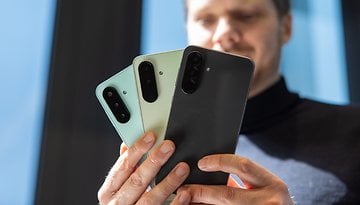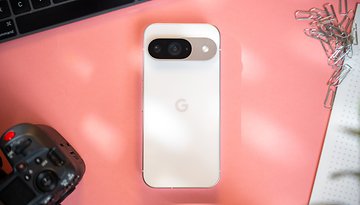Redmi Note 11 Pro vs. Redmi Note 10 Pro: What does the new mid-range phone offer?
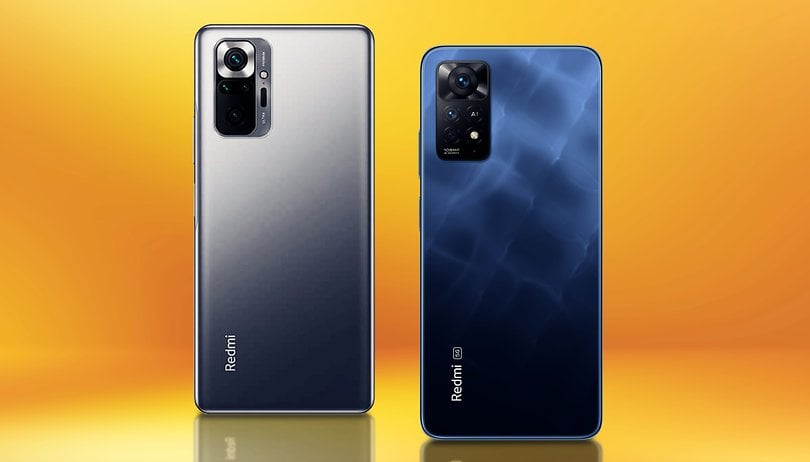

The mid-range king has two new heirs who simply cannot wait to take over his position on the throne! The Redmi Note 11 Pro and the Redmi Note 11 Pro 5G do offer some improvements, but is it worth upgrading if you are currently using the Note 10 Pro? We will first offer you a comparison of the hardware specifications.
In 2021, Xiaomi broke new records when the Redmi Note 10 Pro was released. For the very first time, there was a device in the mid-range smartphone market that offered both an AMOLED display with a 120 Hertz refresh rate and a 108 MP camera. Almost exactly one year later, there is the successor, the Redmi Note 11 Pro, which includes a version with a 5G SoC. Even though we do not have the devices in our editorial office yet, we can compare their hardware specifications as seen in the table below:
| 2022 model | 2022 model with 5G | 2021 model | ||
|---|---|---|---|---|
| Product name | Xiaomi Redmi Note 10 Pro | |||
| Image |  |
|||
| Display | 6.67" AMOLED display with FHD+ resolution | 120 hertz refresh rate | 6.67" AMOLED display with FHD+ resolution | 120 hertz refresh rate | 6.67" AMOLED display with FHD+ resolution | 120 hertz refresh rate | |
| Dimensions / Weight | 164.19 x 76.1 x 8.12 mm | 202 grams | 164.19 x 76.1 x 8.12 mm | 202 grams | 164 x 86.5 x 8.3 mm | 193 grams | |
| IP certification | IP53 | IP53 | IP53 | |
| Performance | MediaTek Helio G96 | 6 / 8 GB LPDDR4X RAM | 64 / 128 GB UFS 2.2 memory | Qualcomm Snapdragon 695 | 6 / 8 GB LPDDR4X RAM | 64 / 128 GB UFS 2.2 memory | Qualcomm Snapdragon 732G | 6 / 8 GB LPDDR4X RAM | 64 / 128 GB UFS 2.2 memory | |
| Expandable storage? | Yes, up to 1 TB | Yes, up to 1 TB | Yes, up to 1 TB | |
| Connectivity | LTE, Bluetooth 5.1, NFC, IR blaster, jack connector | 5G, Bluetooth 5.1, NFC, IR blaster, jack connector | LTE, Bluetooth 5.1, NFC, IR blaster, jack connector | |
| Cameras | Main: 108 MP | f/1.9 Ultra Wide: 8 MP | f/2.2 Macro: 2 MP | f/2.4 Selfie: 16 MP / f/2.4 | Main: 108 MP | f/1.9 Ultra-wide: 8 MP | f/2.2 Macro: 2 MP | f/2.4 Selfie: 16 MP / f/2.4 | Main: 108 MP | f/1.9 Ultra-wide: 8 MP | f/2.2 Macro: 2 MP | f/2.4 Selfie: 16 MP / f/2.4 | |
| Battery | 5,000 mAh | 67 Watt Quick-Charging | 5,000 mAh | 67 Watt Quick-Charging | 5,020 mAh | 33 Watt Quick-Charging | |
| Audio | Dual speaker | Dual speaker | Dual-Speaker | |
| Price | $299 | $329 | From 279 Euro ~$314 (MSRP) | |
| Review | - | - | Read review | |
| Check offer* | Currently unavailable |
Currently unavailable |
Note: This comparison is based on the hardware specifications. A hands-on comparison will follow later.
I have already marked out the advantages you and in order to avoid any confusion, I will treat the new Note 11 devices as one device. After all, they will offer the same features, apart from the 5G-capable SoC in the 5G model.
Redmi Note 11 Pro vs. Note 10 Pro: Display and case
Let's begin with the most obvious matter: Nothing has changed in the display. As before, the AMOLED panel measures 6.67 inches across diagonally, with a 2,400 x 1,080 pixels resolution, and displays content at a high 120 Hertz refresh rate. However, the average brightness has increased a bit to 700 nits and the bezels have shrunk a bit. As a result, the Note 11 Pro measures 163.7 x 76.2 x 8.3 mm while the predecessor was a tad larger at 164 x 86.5 x 8.3 mm.
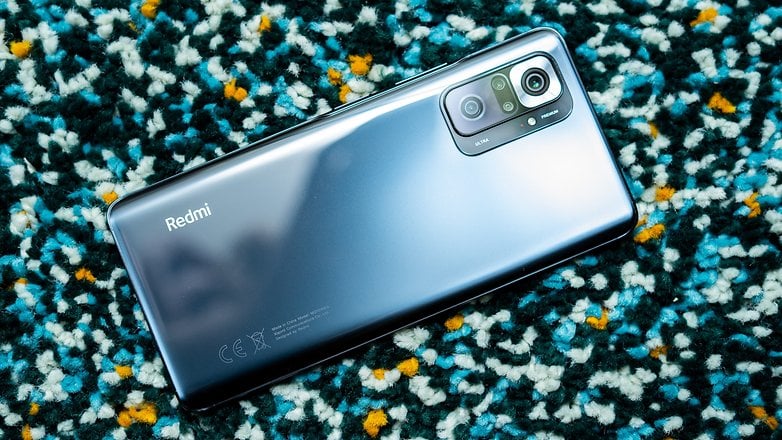
The new model has become a bit heavier, now tipping the scales at 207 grams, and looks a bit different from the back. That is because Xiaomi has finally opted for a matte back, which almost looks like a metal back initially. However, that is not true, because Xiaomi still relies on polycarbonate or in simple English, plastic. Stereo speakers are still on board, while the fingerprint sensor still remains integrated into the power button, and the 3.5 mm jack is not missing in the Pro model.
Redmi Note 11 Pro vs. Note 10 Pro: Performance and connectivity
While we do not see any relevant changes in the display, Xiaomi has fixed a major shortcoming when it comes to the predecessor. The Note 11 Pro is equipped with the new 5G version with Xiaomi utilizing the Snapdragon 695 chipset, which is still a very new mid-range SoC that will have to prove itself in the review later. However, a 6-nanometer manufacturing process and clock rates of up to 2.2 GHz look promising on paper. Xiaomi again pairs the CPU to 6 GB or 8 GB of LPDDR4X RAM and either 64 GB or 128 GB of internal UFS 2.2 storage.
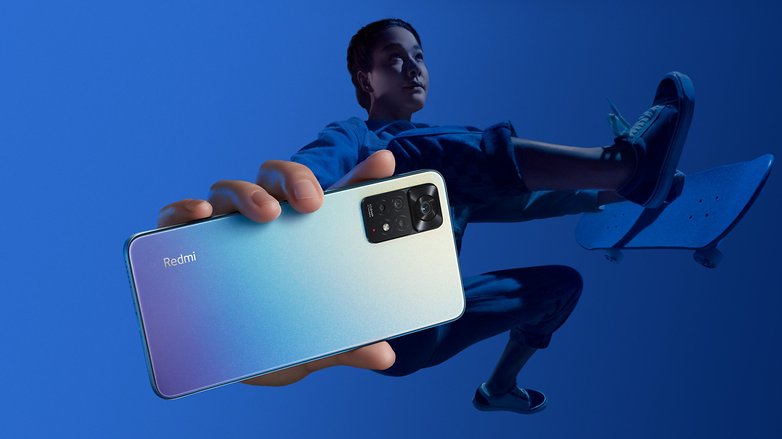
The LTE variant of the Redmi 11 is equipped with a MediaTek Helio G96 and we can compare it with the Snapdragon 732 G in its predecessor. The MediaTek SoC was launched later, but it uses a larger manufacturing process at 12 nanometers. The clock rate of the high-performance cores is also a bit lower, while the six other cores clocking higher. Thus, it is very exciting to see which smartphone will deliver a performance advantage in the end. We will find out after the review!
In terms of other connectivity, things have not really improved. You already know that there is a 5G version, while Bluetooth 5.1 and Wi-Fi 5 remain identical. Furthermore, the Chinese manufacturer is one of the few to retain an IR blaster and also leaves the NFC chip where it belongs.
Redmi Note 11 Pro vs. Note 10 Pro: Cameras
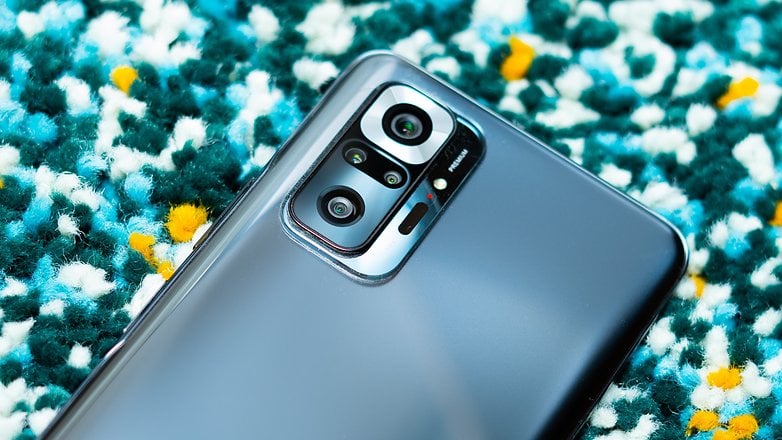
Things look quite sobering when it comes to the cameras in the successor. Instead of improvements, there is only the realization that nobody needs sensors for depth information. This is because Xiaomi has left out the depth camera in the Redmi Note 11 Pro (5G), leaving the 108 MP main camera with f/1.9, the 8 MP ultra-wide-angle and 120-degree field of view, and the 2 MP telephoto camera.
The fact that Xiaomi does not offer anything new here means that you do not have to upgrade from the predecessor. Those who had hoped for innovations will be left empty-handed according to the specifications sheet. However, the reveal might reveal a plus in picture quality due to more sophisticated software processing.
Redmi Note 11 Pro vs. Note 10 Pro: Software
While we are on the subject: The Note 11 Pro is equipped with MIUI 13 right out of the box. Those hoping for Android 12 will, unfortunately, be disappointed as the new operating system skin is still based on Android 11. This means you will have to live with Android 11 and the subsequent update schedule, which is a bit of a shame. Since the Redmi Note 10 Pro will also receive an update to MIUI 13, there are no differences to report in terms of software.
Redmi Note 11 Pro vs. Note 10 Pro: Battery and Quick Charging
But what are the reasons for the new model then? I suppose a lot of it lies in Quick Charging, because Xiaomi steps on the gas in this department. Although you will have to make do without the previously speculated 120-watt fast charging of the Xiaomi 11T Pro, there is a 67-watt fast charging function. This is supposed to half-charge the 5,000 mAh battery of the Redmi Note 11 Pro (5G) within 15 minutes.

This was even slower in the predecessor, the Redmi Note 10 Pro. The battery with approximately the same capacity charges at 33 watts and you arrive at 50 percent capacity in just under 30 minutes. Wireless charging is not available in either the old or the new model.
Redmi Note 11 Pro vs. Note 10 Pro: Prices and availability
Xiaomi's Redmi Note 10 Pro made headlines among the tech fraternity primarily due to one feature: Its aggressive pricing policy, which breached the sub-$350 mark for the 64 GB model. According to the press conference, prices for the successor start at $299 and $329 for the 5G version.
As of now, there is no information on whether the company will launch the devices in the US.
Conclusion: Is it worth upgrading?
If you are reading this article on a Redmi Note 10 Pro, you do not need to set aside some budget for an upgrade at first glance. Xiaomi already offered features in the mid-range that are hard to beat last year. This is confirmed by the fact that the manufacturer hardly finds any new features to integrate in 2021. However, with a faster Quick Charging rate and 5G compatibility, Xiaomi has improved exactly what remained to improve.
If you are switching from an older model or buying a smartphone for the first time, you should go for the Redmi Note 11 (5G). Experience has shown that fast charging is extremely convenient in everyday use, and if your mobile contract supports 5G, you can surf with ease in the future. We will find out everything else when the new Xiaomi devices are reviewed in our editorial office.
Are you interested in the new Xiaomi Devices? Now that the ban is lifted, do you think the company will import them to the US?






